Dame's rocket (Hesperis matronalis) is an edible biennial plant native to Eurasia that belongs to the mustard family. It was introduced to North America in the 1600s. The beautiful purple and white flowering plant belongs to the Brassicaceae family of plants, which includes arugula, mustard, and broccoli.
Dame’s rocket plant profile
| Scientific name | Hesperis matronalis |
| Family name | Brassicaceae (mustard family) |
| Plant type | Herbaceous biennial or short-lived perennial |
| Kingdom | Plantae |
| Genus | Hesperis |
| Phylum | Vascular plant |
| Habitat | Prefers moist, well-drained loams |
| Flower color | White, pink, or purple |
| Bloom time | Early spring through early September |
Common names include:
- dame’s-violet
- mother-of-the-evening
- sweet rocket
- damask-violet
- dames-wort
- dame’s gilliflower
- night-scented gilliflower
- summer lilac
- winter gilliflower
- queen’s gilliflower
Why is it called Dame’s rocket?
The genus name Hesperis is Greek for “evening” or “vesper-flower,” as that is when the fragrance is greatest, and matronalis is Latin and alludes to the March 1st Roman festival of Matrons, which indicates that this flower was a favorite of married women – hence the name “dame’s rocket.”
In the language of flowers, “rocket” represents deceit since the plant gives off a lovely perfume at night but has no scent during the day. “Rocket” is the common name for many plants of the mustard family.
What Are You Foraging For Right Now?
We're thrilled to hear your ideas. What would you like to submit today? Feel free to share your thoughts and experiences with us.
Is Dame’s Rocket the same as the money plant?
No, they are different plants.
Money plant (Lunaria annua) can easily be confused with Dame’s rocket (Hesperis matronalis). Due to its attractive flowers and unusual seedpods, the money plant was introduced into the United States from Europe as a horticultural plant.
Like Dame’s rocket, it inhabits semi-shaded areas such as woodland edges, hedges, and flower gardens.
This plant, however, has not been significantly invasive of natural areas, unlike Dame’s rocket.
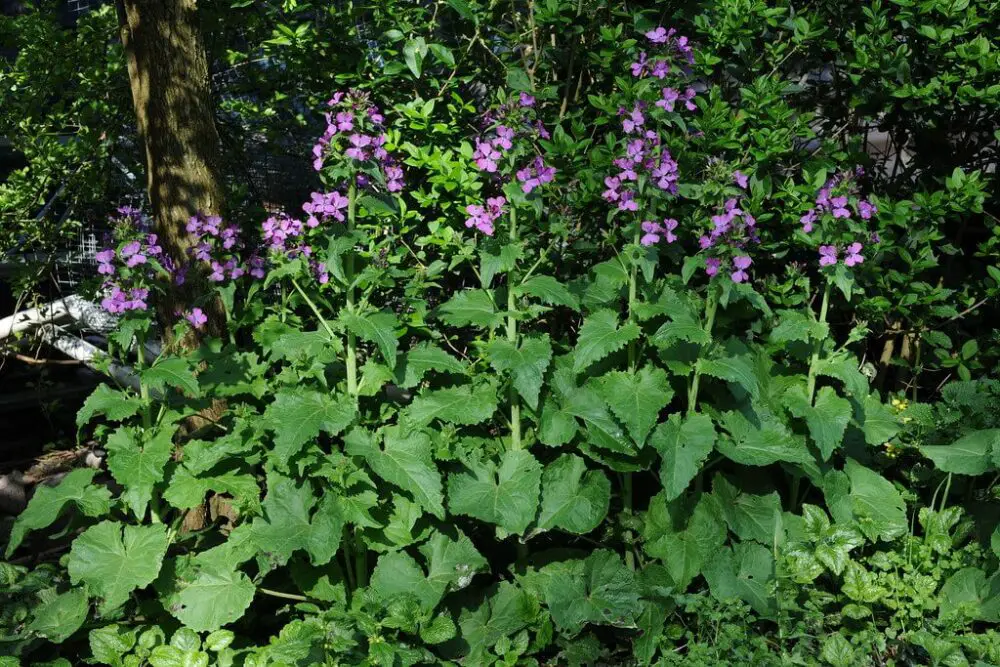
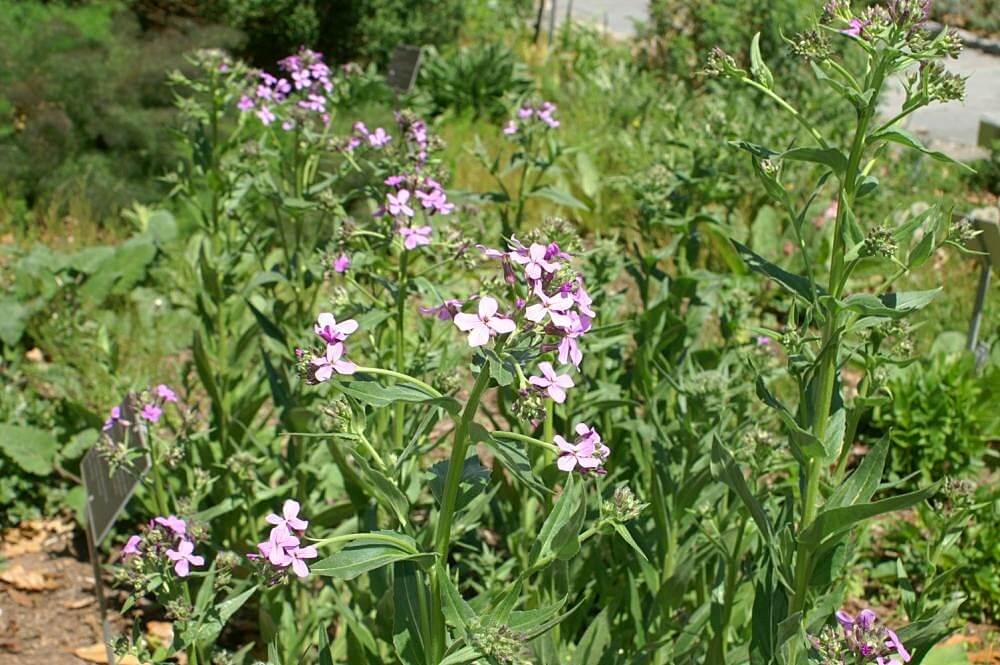
What is the difference between phlox and Dame’s Rocket?
Dame’s rocket is a wildflower often confused with garden phlox (Phlox paniculata) or native phlox.
The difference is that garden phlox has flowers with five petals, while Dame’s rocket has four petals; phlox features opposite, un-toothed leaves, whereas Dame’s rocket has alternate, toothed leaves.
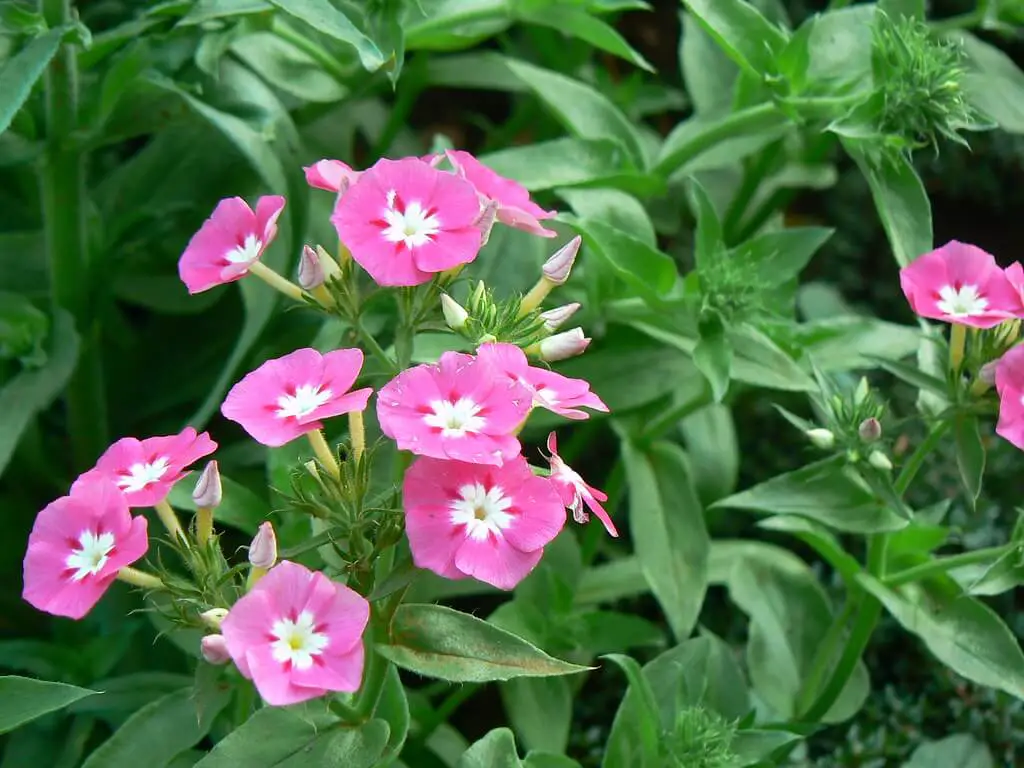
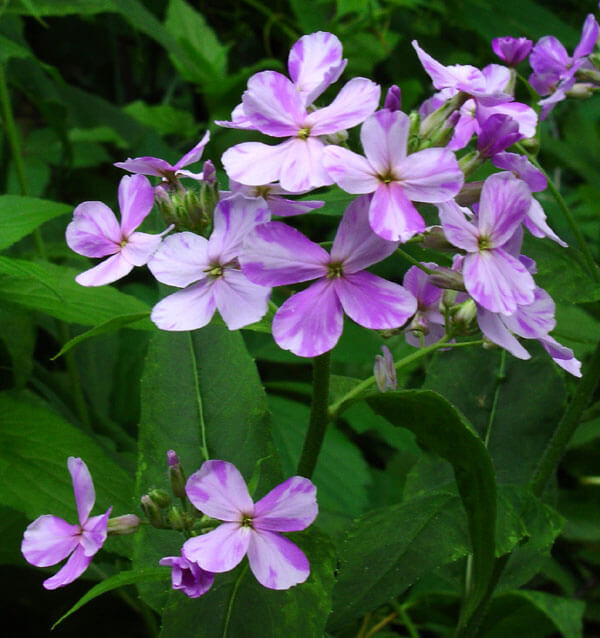
Where does Dame’s rocket grow?
A native plant to Europe and Asia, it was originally brought to the United States as an ornamental plant.
As with many introduced varieties, its seeds spread beyond garden borders and naturalize in nearby woodlands, meadows, roadsides, disturbed areas, and cottage gardens.
Dame’s rocket grows best in moist soils with partial sun exposure but can tolerate full sun. The plant has a taproot and secondary fibrous roots and propagates from seeds.
Dame’s Rocket Identification
Dame’s rocket bears clusters of showy, attractive, fragrant, pinkish-purple to white four-petaled flowers on stems 2 to 4 feet in length.
Flowers are produced between May and August, and each flower cluster can produce seeds as well as flowers at the same time.
Leaf surfaces are slightly hairy and lance-shaped, with toothed margins. The leaves of this plant species are arranged alternately on the stem, and the basal rosette of leaves remains semi-evergreen throughout the winter.
During the first year of growth, the plants form a rosette of basal leaves. The second year or third year, Dame’s rocket flowers, producing a flowering stem, bloom, and then it dies.
The seed pods measure approximately 1 and 1/2 inches and are very narrow.
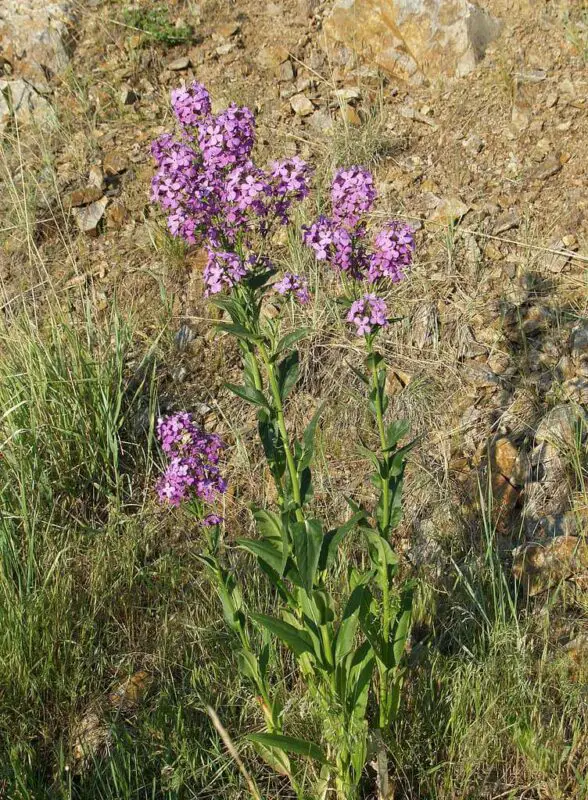
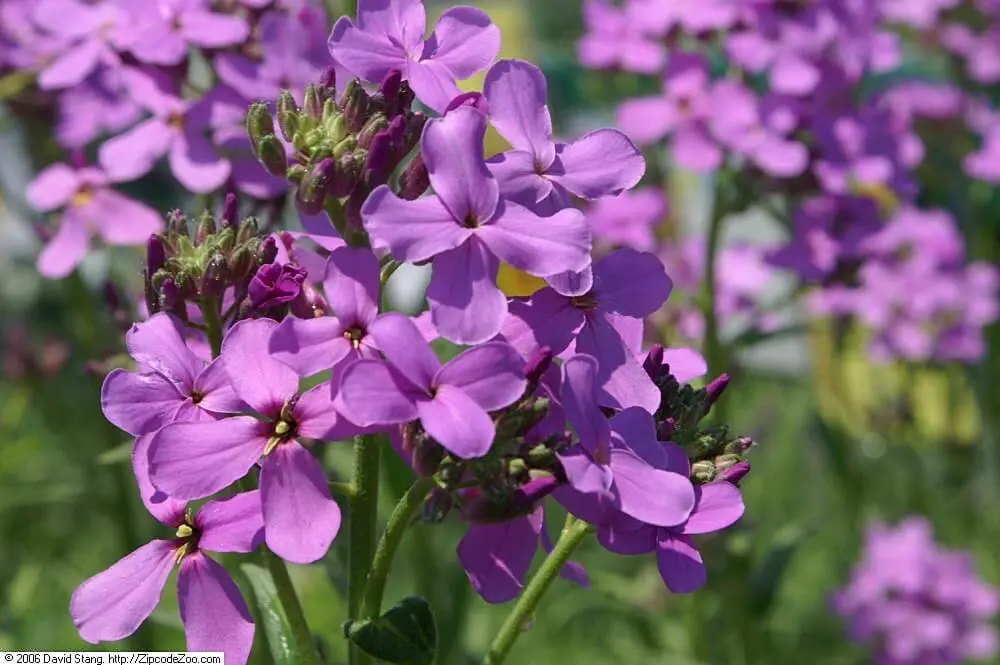

Is this plant invasive?
It has been reported invasive in the following states: CO, CT, IN, MD, MI, NJ, PA, TN, VA, WI, and WV.
As the name implies, invasive species are non-native species that have the potential to harm the environment. In addition to proliferating, Dame’s rocket grows tall enough to block the sun from reaching native species.
As a result, the native species cannot receive sufficient sunlight and are eventually overtaken by the Dame’s rocket.
Is Dame’s rocket edible?
Yes, Dame’s rocket is edible.
The plant is a close relative of the arugula. Sometimes it is a little mustardy, and sometimes it is a little spicy.
How to use Dame’s rocket in the kitchen
Older leaves can be lightly cooked as an alternative to spinach, added to sauces, stir-fries, or sautéed in olive oil.
Salads can be made with very young leaves, the teeny tiny leaves about a couple of inches long, but they must be harvested within a relatively short period of time.
However, it is in the cooking process that this plant shines. The sweetness and tenderness of the leaves make this plant a showstopper as a pot herb/cooking green after a quick dip in boiling, salted water. The leaves are tender, with a capital T, and delicious.
Dame’s rocket provides a bounty of tender (after cooking) clusters of basal leaves, but it also provides a few other treats:
- unopened flower buds, or raabs, are delicious cooked quickly in the same way as a small, beautiful broccoli
- the flowers have a peppery, slightly sweet flavor similar to arugula or garlic mustard flowers, and can be used raw or added to any dish
Try this recipe below:
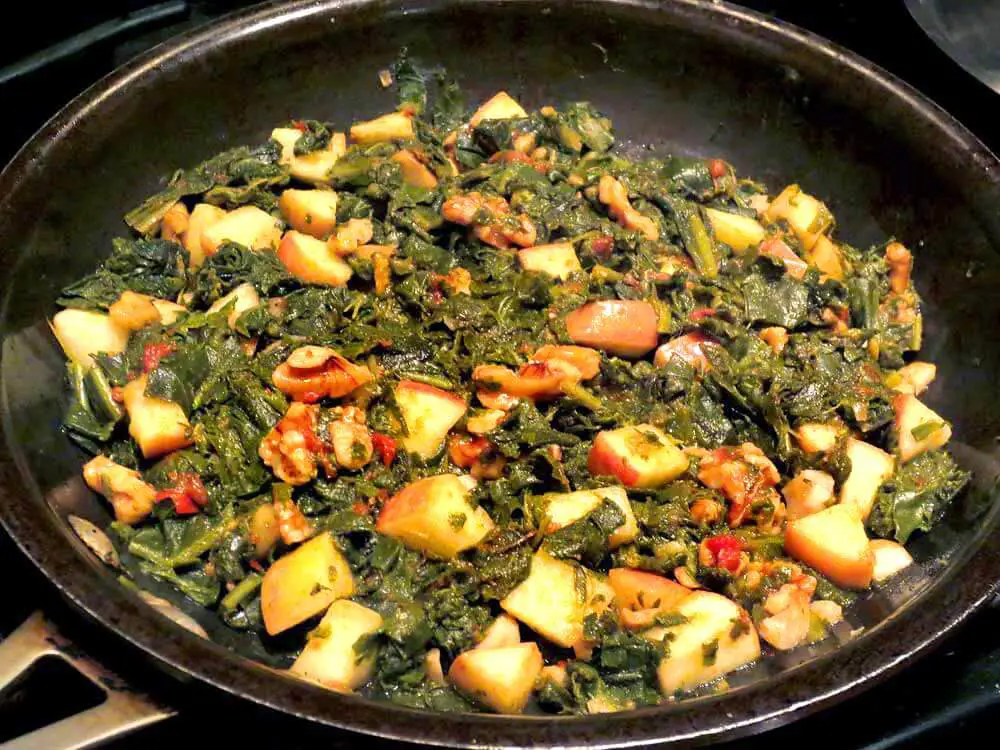
What else is Dame’s rocket used for?
It has been used medicinally to induce sweating, promote urination, and loosen coughs, but no scientific evidence supports its usage.
Ana has always been interested in all things nature and flora. With her expertise in home gardening and interest in foraging, she has been spending her weekends and free time looking for edible native plants, flowers, and fungi. One of her many hobbies includes testing new savory and sweet recipes, juices or teas made from freshly picked plants, wild fruits, or mushrooms.

